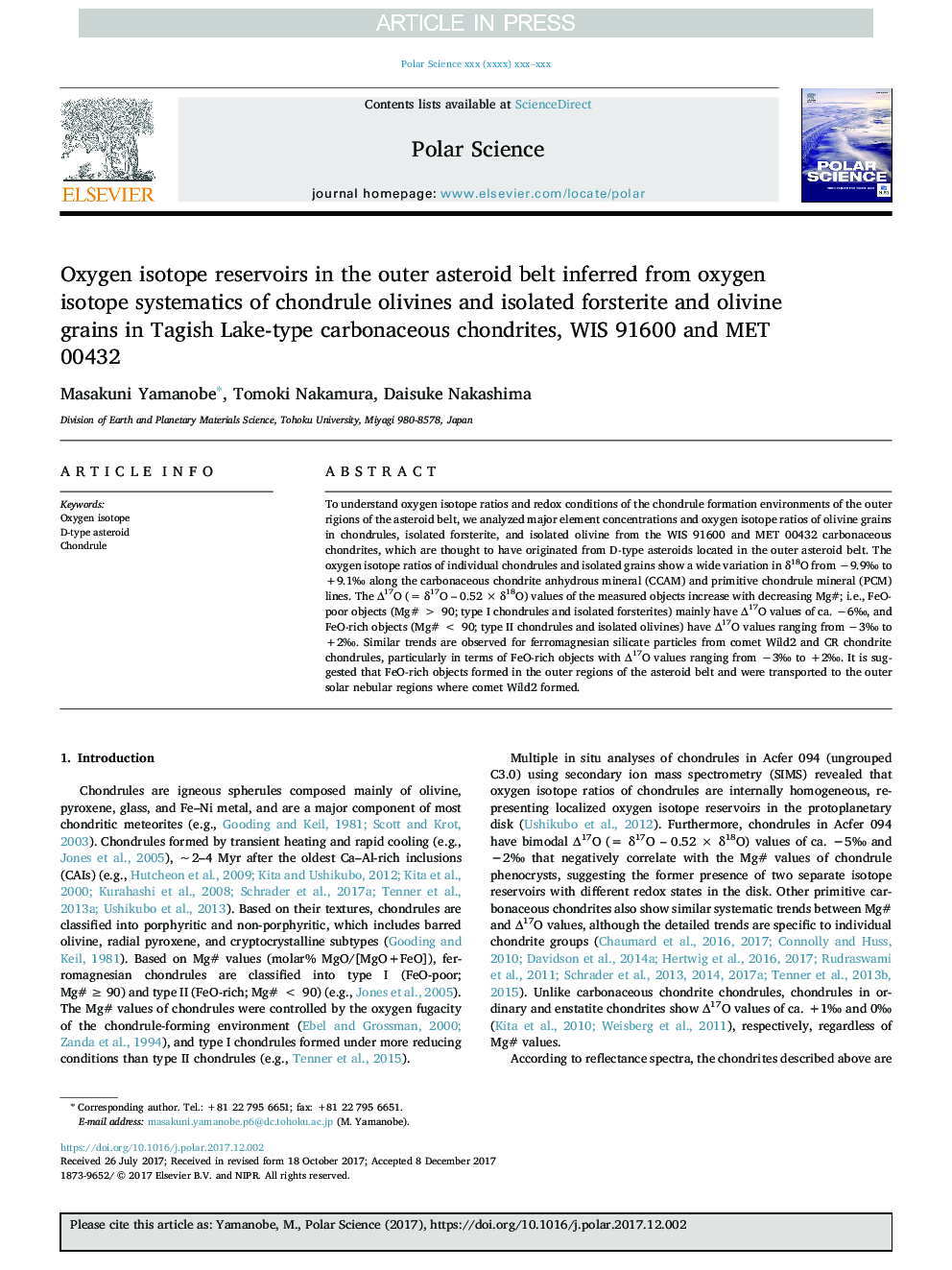| Article ID | Journal | Published Year | Pages | File Type |
|---|---|---|---|---|
| 8907816 | Polar Science | 2018 | 10 Pages |
Abstract
To understand oxygen isotope ratios and redox conditions of the chondrule formation environments of the outer rigions of the asteroid belt, we analyzed major element concentrations and oxygen isotope ratios of olivine grains in chondrules, isolated forsterite, and isolated olivine from the WIS 91600 and MET 00432 carbonaceous chondrites, which are thought to have originated from D-type asteroids located in the outer asteroid belt. The oxygen isotope ratios of individual chondrules and isolated grains show a wide variation in δ18O from â9.9â° to +9.1â° along the carbonaceous chondrite anhydrous mineral (CCAM) and primitive chondrule mineral (PCM) lines. The Î17O (= δ17O - 0.52 Ã δ18O) values of the measured objects increase with decreasing Mg#; i.e., FeO-poor objects (Mg# > 90; type I chondrules and isolated forsterites) mainly have Î17O values of ca. â6â°, and FeO-rich objects (Mg# < 90; type II chondrules and isolated olivines) have Î17O values ranging from â3â° to +2â°. Similar trends are observed for ferromagnesian silicate particles from comet Wild2 and CR chondrite chondrules, particularly in terms of FeO-rich objects with Î17O values ranging from â3â° to +2â°. It is suggested that FeO-rich objects formed in the outer regions of the asteroid belt and were transported to the outer solar nebular regions where comet Wild2 formed.
Keywords
Related Topics
Physical Sciences and Engineering
Earth and Planetary Sciences
Earth and Planetary Sciences (General)
Authors
Masakuni Yamanobe, Tomoki Nakamura, Daisuke Nakashima,
